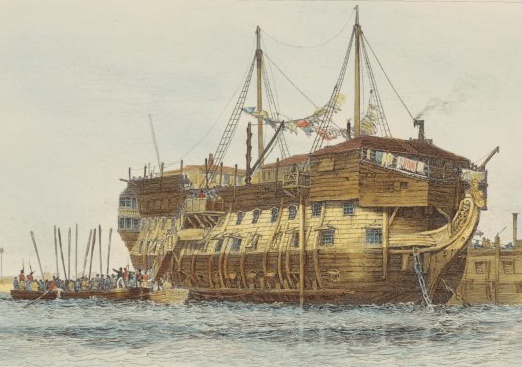It has been said that when tracing information about your ancestors, it’s best if they were either aristocrats or convicts. For the average person there is very little more than a record of their birth, death or marriage, and one often cannot trace earlier than 1538, when in Henry VIII’s time official church records began.
However, if your ancestor came up against the law, the harder they fell, the more extensive the records, including photographs in the later Victorian period with well written records and newspaper reports. The following gentlemen from Southam were common men, but their lives are well documented because of their clashes with the law.
In 1819, Daniel was convicted of burglary with five others at the Oxford Assizes, resulting in at first a death sentence. This was reduced to transportation to Australia for life. (House breaking often led to life transportation.) We don’t know what Daniel stole, but we do know who he was, where he was from, and what happened to him.

National Maritime Museum, Greenwich, London
Age 26, Daniel was taken to the Leviathan Convict hulk at Portsmouth harbour (see photo) to await his transportation by the ‘Prince of Orange’ ship to New South Wales. He eventually arrived there in February 1821. He was described as 5ft 10ins tall, with a dark sallow complexion, brown hair nearly bald and grey eyes. His identifying feature was a scar across the inside fingers of his right hand, which I’m sure has a story of its own to tell. He was pardoned in 1839 and in 1842 was married at Port Macquarie, (242 miles north of Sydney) to a female convict sent out for ten years. He settled in Australia died there in 1879, and his descendants visited his UK place of birth in 2016.
Another local man, RW age 27, was convicted of embezzlement in 1830 and sentenced at Warwick Assizes to 14 years transportation to New South Wales. He was sent to the Cumberland hulk at Chatham to await his ship, with eight others from Warwick Gaol who were being transported to Australia for life for house-breaking. RW was pardoned before his 14 years were up and returned home to Southam, but he clearly hadn’t learnt his lesson. In 1842 he was back before Warwick Assizes for the same crime of embezzlement and this time his court case was fully reported in the Warwickshire Advertiser.
He had been employed by Thomas Oldham, whose daughter Francis kept her father’s books. Giving evidence, Francis said that RW delivered milk to customers for her father, and took payment. She had repeatedly asked RW for the £1-10s-11d (about £100 today) due from Mrs Pearson, but she had never received the money, only excuses from RW as to why he didn’t have it. He said he was short of money to pay some debts, and hoped to borrow off his brother to pay it back, but it appears his brother wasn’t willing to cover his debts. Miss Oldham did say he had been of good character until recently. The Jury found him guilty and this time he was sentenced to six months hard labour in the House of Correction at Coventry.
Southam Heritage Collection is located in the atrium of Tithe Place opposite the Library entrance. We are open on Tuesday, Thursday, Friday and Saturday mornings from 10am to 12 noon. To find out more about Southam’s history, visit our website www.southamheritage.org telephone 01926 613503 or email southamheritage@hotmail.com You can also follow us on Facebook.

Leave A Comment